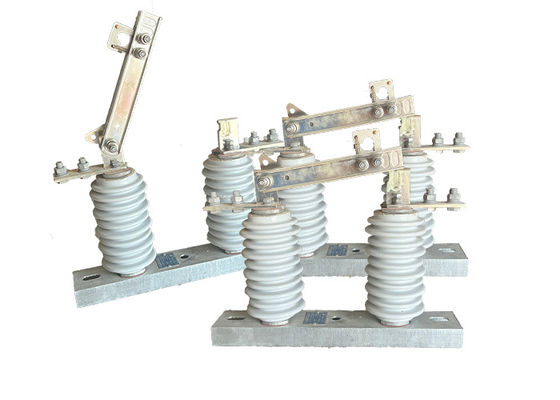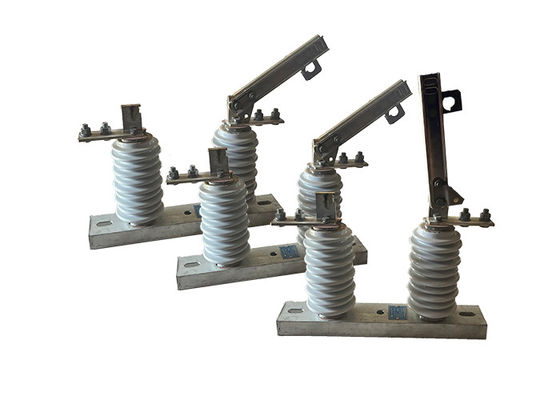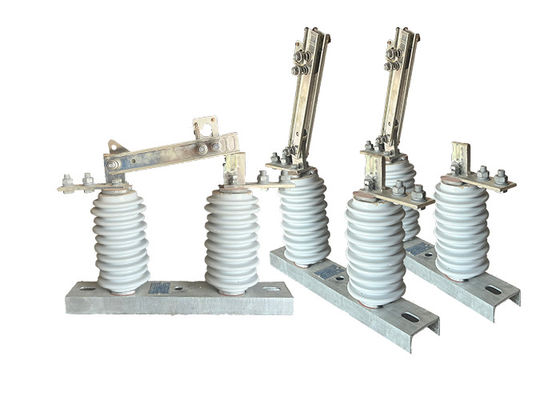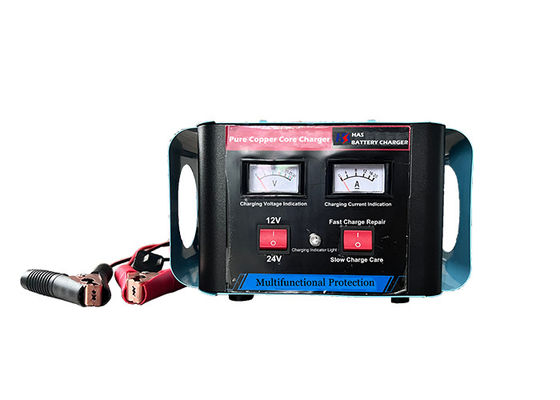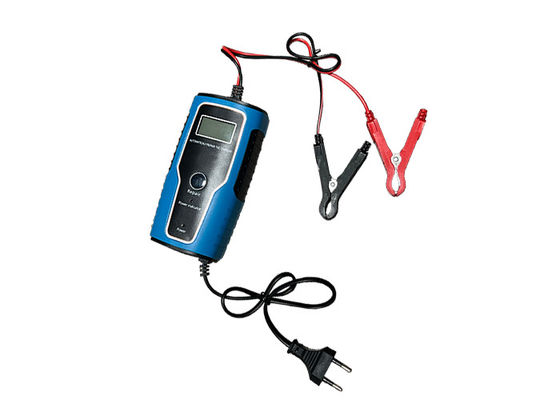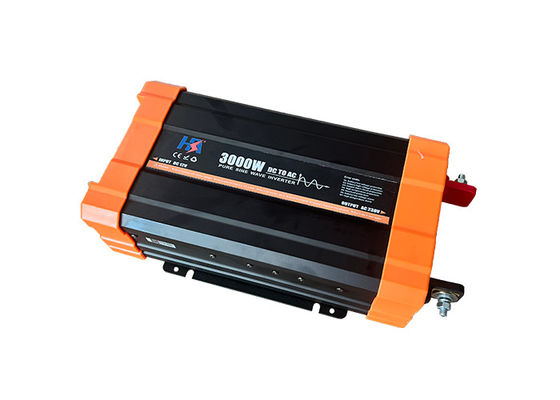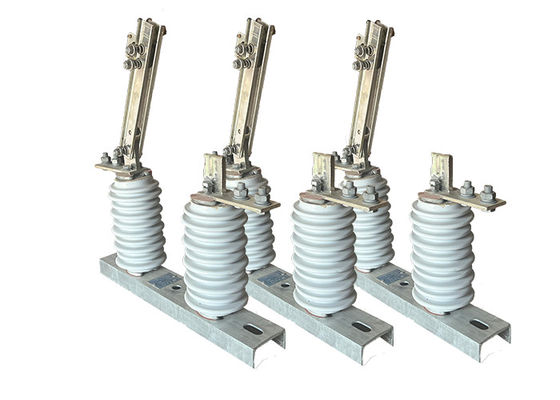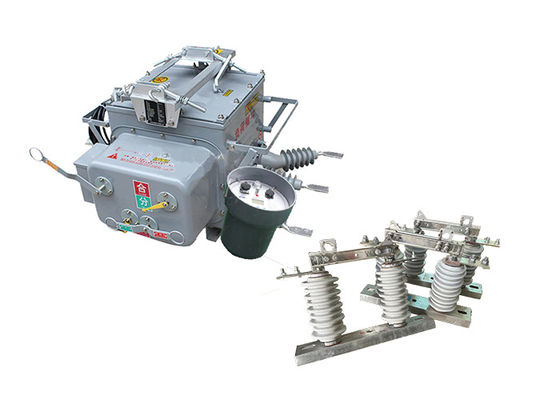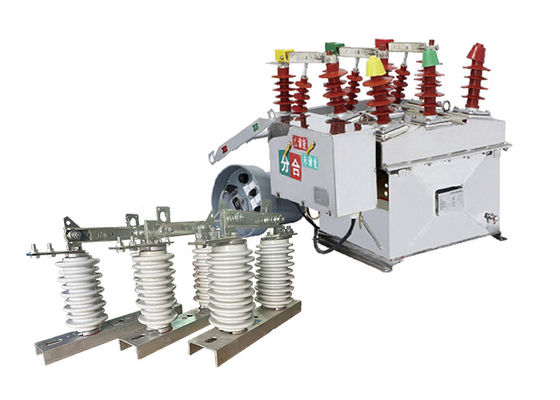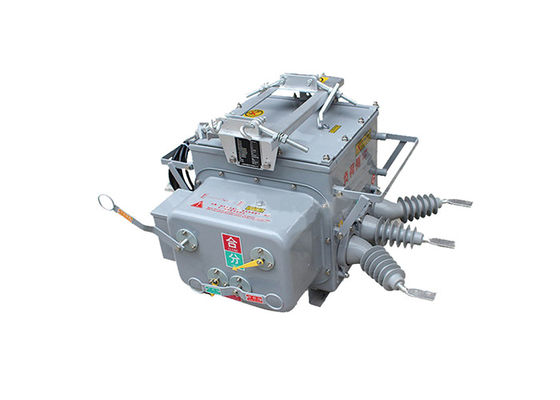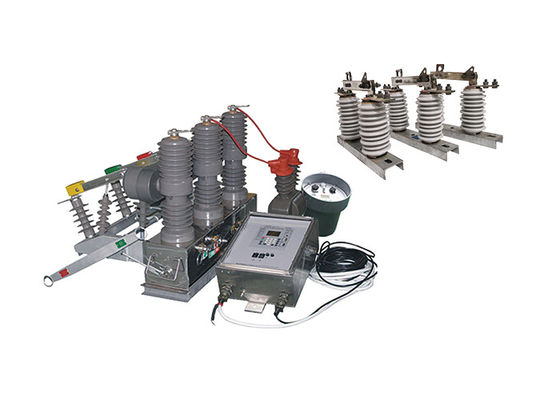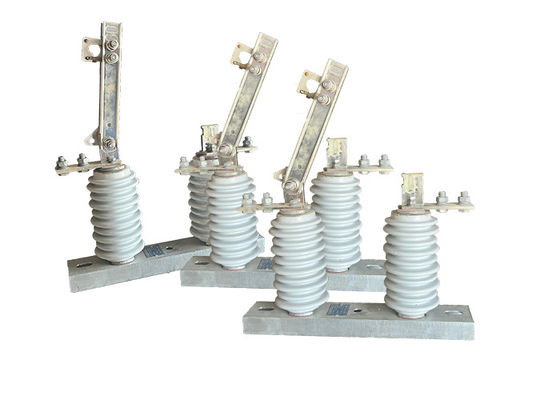Outdoor Hv Isolator Switch With Interlocking Mechanism For Protecting On Power Transmission System For Altitude 1000m
Product Decription:
High voltage isolator switches play a crucial role in power transmission and distribution systems. Their ability to isolate specific sections of the network is essential for maintenance, repair work, and handling abnormal conditions. The design and construction of these switches are focused on their capability to handle high voltages and currents, as well as withstand harsh environmental conditions.
The different types of high voltage isolator switches, such as air-break switches, oil-immersed switches, and gas-insulated switches, offer various advantages depending on the specific application. Air-break switches are the most common and rely on physically separating contacts to interrupt the circuit. Oil-immersed switches are filled with oil to prevent arcing, making them suitable for high voltage applications. Gas-insulated switches utilize sulfur hexafluoride gas for insulation, allowing for more compact designs.
Operating and maintaining high voltage isolator switches require qualified personnel with proper training. Safety procedures, including the use of personal protective equipment and adherence to lockout/tagout protocols, are critical to prevent accidents and ensure worker safety. Regular maintenance and testing are also important to verify proper functionality and safety of these switches.
Operation
1.Initial Position: The disconnector switch is initially in the closed position, meaning the circuit is connected and energized. The switch's blade or contact is in contact with the corresponding terminals or conductors, allowing the flow of electrical current.
2.Preparation and Safety Measures: Before operating the switch, proper safety measures should be taken, such as wearing appropriate personal protective equipment (PPE) and ensuring the area is clear of any potential hazards. It is essential to follow established safety protocols and guidelines.
3.Manual Operation: The operator rotates the switch's pole or handle, which controls the opening and closing of the switch's blade or contact. The pole is typically located at a safe distance from the live electrical components and is made of a non-conductive material for insulation.
4.Opening the Switch: By rotating the pole, the switch's blade or contact is disengaged from the terminals or conductors, effectively opening the circuit. This action interrupts the flow of electrical current and disconnects the circuit from its power source.
5.Visible Indication: As the switch is operated, it provides a visible indication of its status. The position of the switch's blade or contact can be observed, usually through a transparent enclosure or by using visual indicators, to determine whether the circuit is connected or disconnected.
6.Maintenance or Repair: With the disconnector switch in the open position, maintenance or repair activities can be safely performed on the circuit. Workers can work on the system without the risk of electric shock, as the circuit is isolated from the power source.
7.Closing the Switch: Once the maintenance or repair tasks are completed, and it is safe to restore power to the circuit, the operator rotates the pole in the opposite direction to close the switch. The blade or contact re-engages with the terminals or conductors, reconnecting the circuit to its power source.
8.Verification: After closing the switch, it is important to verify that the circuit has been successfully re-energized and is functioning correctly. This can be done through appropriate testing and monitoring procedures to ensure the system is operating as intended.
Safety Risks:
1.Electrical shock: High voltage disconnect switches can deliver a potentially lethal electric shock if they are not handled properly. This can happen if the switch is not properly isolated before it is opened or if there is a fault in the equipment.
2.Arc flash: When high voltage disconnect switches are opened, an arc flash can occur, which can release a significant amount of energy in the form of heat, light, and pressure. This can cause burns, eye damage, and other injuries.
3.Equipment failure: High voltage disconnect switches can fail if they are not properly maintained or if they are overloaded. This can lead to equipment damage, electrical fires, and other hazards.
4.Environmental hazards: High voltage disconnect switches are often located in outdoor environments, where they can be exposed to extreme weather conditions, such as high winds, heavy rain, and lightning strikes. These conditions can create additional safety risks for personnel who are operating or maintaining the equipment.
P.S.
To minimize the risks associated with high voltage disconnect switches, it is important to follow proper safety procedures, including using appropriate personal protective equipment, following lockout and tagout procedures, and ensuring that only qualified and trained personnel are allowed to operate and maintain the equipment. Regular maintenance and testing of the equipment can also help to reduce the risk of equipment failure and other hazards.
Safety Tips:
1.Always wear appropriate personal protective equipment (PPE) such as gloves, safety glasses, and flame-resistant clothing.
Before working on the switch, ensure that the power supply is turned off, and the switch is properly grounded.
2.Follow the manufacturer's instructions for operating the switch, and do not attempt to bypass safety features or use the switch for purposes other than its intended use.
3.When working on the switch, use insulated tools and equipment to prevent electric shock.
4.Avoid touching any conductive parts of the switch and keep a safe distance from the switch when it is in operation.
5.Never attempt to repair or modify the switch yourself unless you are a qualified and trained professional.
6.Keep the area around the switch clean and free of debris that may interfere with its operation.
7.Regularly inspect the switch for signs of wear or damage, and replace any damaged or worn parts as soon as possible.
8.Only authorized personnel should be allowed to operate or perform maintenance on the switch.
9.In case of an emergency, follow established emergency procedures and shut off power to the switch immediately.
Function:
The main function of a high voltage electrical isolator is to provide electrical insulation between the high voltage AC conductor and the supporting structure, and to support the weight of the conductor. It is designed to withstand high levels of voltage and electrical current, and is typically made of materials that are highly resistant to electrical arcing and corrosion, such as porcelain or polymer.
Technical Parameters:
| Serial No. |
Parameter |
Unit |
Data |
| 1 |
Rated Voltage |
kV |
12 |
| 2 |
Rated Current |
Model No. |
(H)GW9-12(W)/630-20 |
A |
630 |
| (H)GW9-12(W)/1000-20 |
1000 |
| (H)GW9-12(W)/1250-31.5 |
1250 |
| 3 |
4s Short-time withstanding current |
Model No. |
(H)GW9-12(W)/630-20 |
kA |
50 |
| (H)GW9-12(W)/1000-20 |
50 |
| (H)GW9-12(W)/1250-31.5 |
80 |
| 4 |
Rated Insulation Level |
Lightning surge withstand voltage(peak) |
Polar-to-Earth
(Positive & Negative) |
kV |
75 |
Interfracture
(Positive & Negative) |
85 |
Industrial frequency withstand voltage
(1 min)
(Effective value) |
Dry Test/Wet Test |
Polar-to-Earth |
42(Dry)
34(Wet) |
| Interfracture |
48(Dry) |
| 48(Dry) |
48(Dry)
40(Wet) |
| 5 |
Main Circuit Resistance |
μ Ω |
630 |
| 1000 |
| 1250 |
| 6 |
Mechanical Life Time |
times |
50 |
| 50 |
80
|









 Your message must be between 20-3,000 characters!
Your message must be between 20-3,000 characters! Please check your E-mail!
Please check your E-mail!  Your message must be between 20-3,000 characters!
Your message must be between 20-3,000 characters! Please check your E-mail!
Please check your E-mail! 
